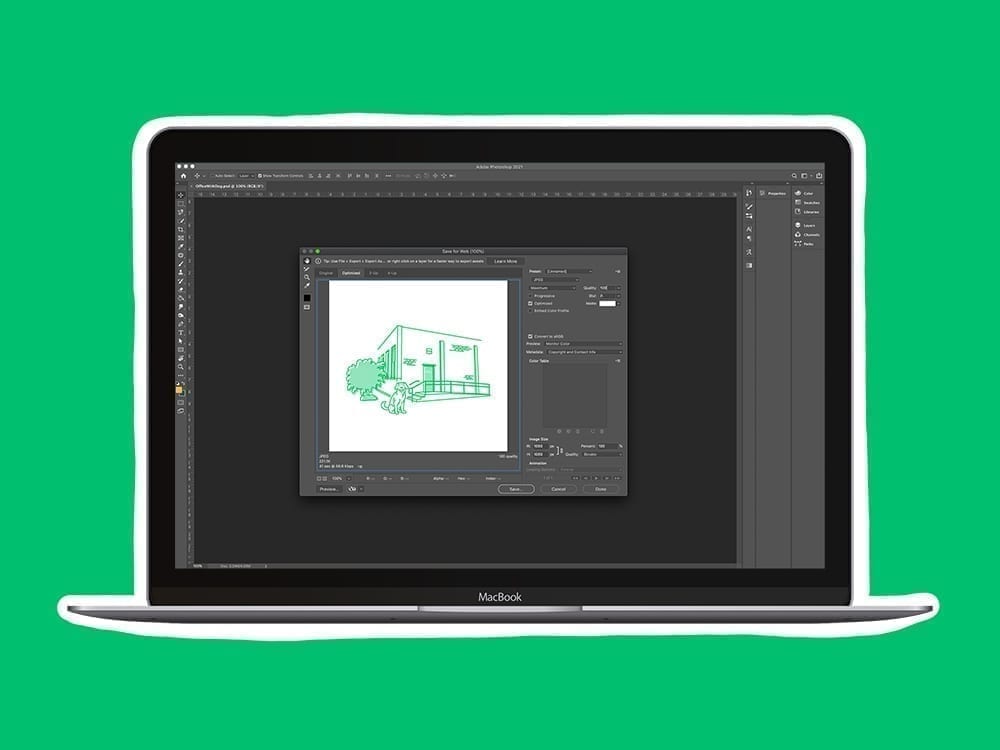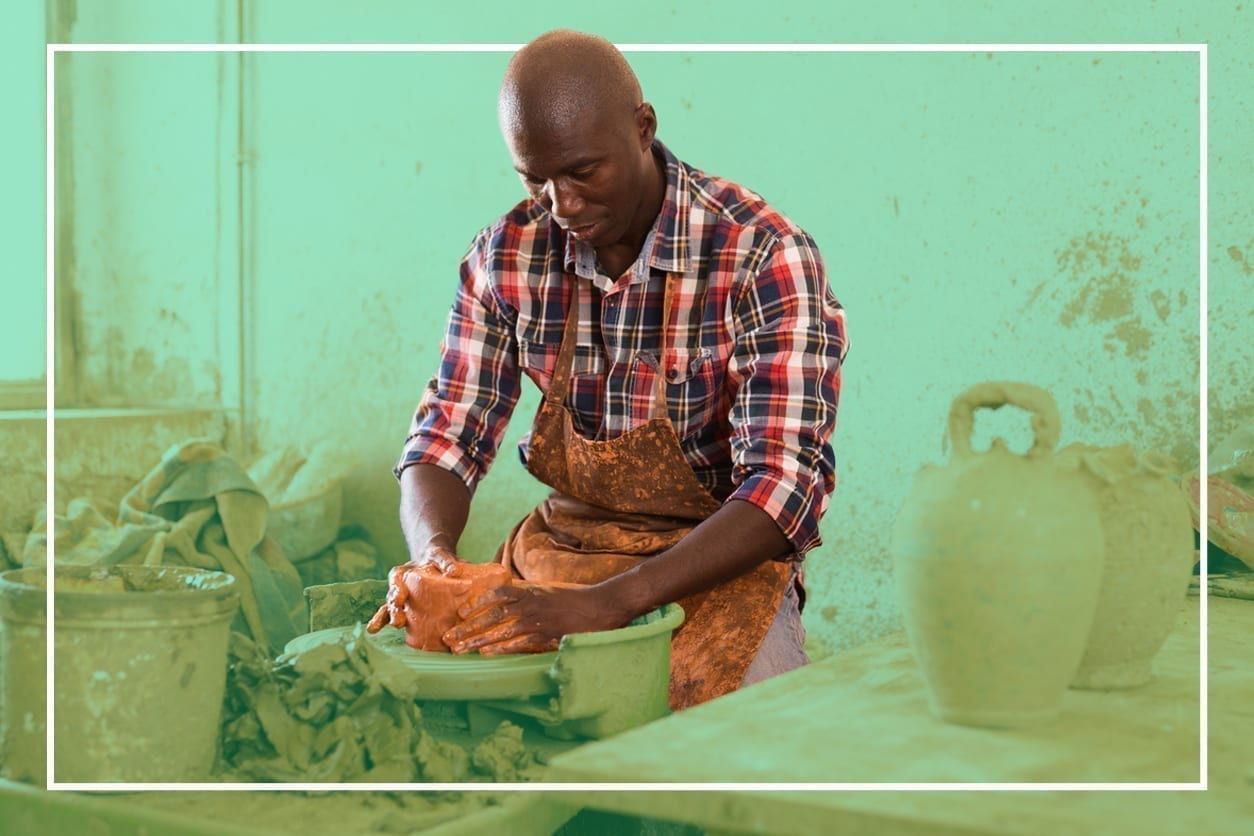An Introduction to SEO for Artists
Managing your own website can be tricky, no matter what. But knowing the particular needs of website design, marketing, and SEO for artists can be even more difficult. Below, we’ll overview why artists should think about how their artwork is presented online and share some tips for making the most out of your digital presence.

Why Should Artists Have Websites?
To many artists, creating and maintaining a website can seem like a hassle—just another thing to keep up with. With so much on your plate, like applying for grants and preparing for exhibitions, it can feel like it’s hard to stay focused on your artwork, whether it’s painting, photography, or another medium.
If you’re an artist, your website should act as a portable portfolio that you can easily share with friends, curators, and interested collectors. For a long time, artists would lug around big portfolio cases with reproductions and studies for larger paintings and sculptures. Now, it’s possible to share images of work fresh from your studio, documentation of recent exhibitions, and in-depth descriptions of your art with just a URL.
SEO for Artists: Why Does It Matter?
Whether you have a website or not, you may have heard of search engine optimization and wondered how SEO for artist websites even works. SEO is the process of organizing information on your website that most effectively gets your message across on search engines like Google or Bing.
But how can SEO help artists? Search engine optimization can help give your work visibility on search engines for the most relevant searches. For example, let’s say you’re an artist who builds large interactive sculptures in public space. You may want to show up on Google for searches similar to “public art commissions” or “interactive sculptures.” Or, if you’re an artist who sells screen-printed posters online, you may want your website to appear in searches from potential customers or clients.
Search engine optimization is not just for corporate brands or small businesses looking to grow. By following the best SEO practices for artists, you can get your artwork in front of as many eyes as possible. Whether your goal is to increase online sales or draw local museum curators and collectors’ attention, SEO can help bring traffic to your website.
The Primary Components of SEO for Artist Websites
There isn’t one simple solution to SEO for artists or one fast way to get to the top of a particular Google search. It’s more useful to think of SEO as a collection of tools to make your website more easily understood by search engines.
Services like Google have crawlers that read the code on all websites to determine whether each page’s content is relevant for search engine users. Whether you’re an artist or not, the tools below can help make sure search engines understand your website and how it might help their users.
Using a Mobile-Optimized Web Builder
As more and more of the internet’s traffic has moved to smartphones and tablets, having a website that looks good and is easy to use on mobile devices is crucial. On the most superficial level, you want to be able to pull up your website during a meeting or while you’re on the go to show others your artwork.
If your website is not optimized for mobile browsing, it will appear as a jumble of images and text. By using a web builder designed for smaller devices, you can make sure your work looks professional wherever you are. Plus, most web builders include other essential tools to make your website SEO-ready.
Some of the best website builders for artists are listed below:
- Squarespace is a great option to quickly build a visually appealing website that looks great on desktop screens and your iPhone. Plus, they have options to add an online store if you want to sell your artwork online.
- Shopify is the best option for artists who really want to use their websites to sell unique artworks, prints, and other merchandise. Shopify is a powerful e-commerce platform that will also allow you to create portfolio pages and share updates through a blog.
- WordPress is a highly customizable, open-source alternative for artists with some technical knowledge that lets you build exactly what you want—gallery pages, blog posts, or an online store.
- Other artist-centric options like Cargo, Format, and Collective Access were explicitly built for artists’ needs and for showcasing artwork and may require less customization on your part.
Check out Online Optimism’s website portfolio to get ideas for your online presence and think about what features you do and do not need.
While picking the right web builder is the first step for stellar SEO for artists, there are a lot of things you can do on an ongoing basis to improve your website’s visibility on search engines. Think of your website’s design as the basic structure you need for Google to understand what’s on it. On top of that, you can be even more specific to let search engines know what each piece of information on your website is doing.
Keep reading for more things you need to know for optimal SEO for artist websites.
SEO for Artists: How to Handle Images

Most artists’ websites include many images: reference shots of individual artworks, photographs of installations and exhibitions, and other documentation. But how do images affect SEO for artists? There are two critical things to consider when uploading images to your website.
First, you want to make sure that you’re formatting and resizing images properly for the web. Use standard, easy-to-load formats like .jpg for your image files. Resize your images to only the size you need.
If you edit images with Adobe Photoshop, use the Save for Web feature to remove additional metadata that might be bogging your files down. A critical aspect of SEO is page-load speed, and properly formatted and sized images can make a big difference.
The second important SEO consideration related to images is the alt text. Alt text is a short bit of additional information that you can add to images so that search engines’ algorithms can better understand what is depicted in each image. When read on their own, these one-line descriptors should give a basic understanding of what the user sees when they look at the image.
For example, A museum wall displays a series of five paintings with blue geometric patterns.
One more: A large sculpture made of a curving piece of metal stands in the middle of a public square.
Alt text was designed for and is still heavily used by screen readers, which allow vision-impaired users to navigate your website. Because alt text is such a vital accessibility tool, it’s important not to make alt text descriptions overly promotional and not add alt text to purely decorative elements like separators or other design choices.
A Note on SEO and Accessibility
As mentioned above, important SEO tactics like alt text for relevant images are also in line with best practices to make your website as accessible as possible. Optimizing your website for people with a range of disabilities, including vision impairment, dyslexia, and colorblindness can only benefit your SEO. If you follow the international standards for web accessibility put forth by the World Wide Web Consortium, you are likely already in line with white-hat SEO strategies.
For more information and guidelines about accessibility focusing on the arts, read artist Carolyn Lazard’s Accessibility in the Arts: A Promise and a Practice, which provides guidelines for arts organizations to make their work, online and in-person, accessible to broader audiences.

Adding Internal and External Links
The internet is structurally a connection of interlinked pages and websites, i.e., the worldwide web. Accordingly, it’s crucial to SEO for artists (and anyone else) to show how their websites exist in relation to everything else online.
When a search engine evaluates your website, it’s also checking whether your website provides relevant and accurate information to visitors. Effectively using links can prove to Google that your website contains important content and is not spammy.
Having all three types of links below can significantly benefit your search visibility:
- Internal links are links within your website. Linking from a page about a specific exhibition or series to another page on your website with related artworks can be useful to visitors and give Google a better understanding of your website’s structure.
- External links may include links to press clippings, venues where you’ve had exhibitions or any sources on the internet related to your research or artistic practice. These external links signify to search engines that your website’s information is backed up by other authoritative sources.
- Backlinks are any links from other websites to yours. While this may not be under your control, any links from news outlets or galleries you work with can benefit artists’ SEO visibility.
Using Schema Tags: SEO for Artists
An additional useful tool to improve SEO for artist websites is structured data. According to the SEO experts at Yoast, “Structured data is code in a specific format…[put] in such a way that search engines understand it. Search engines read the code and use it to display search results in a specific and much richer way.”
Hidden to website viewers, structured data allows you to give specific information about yourself and your art to Google and other search engines. The industry standards for structured data have been set forth by schema.org.
While this may be the most technical of the SEO strategies mentioned here, structured data can help you tell Google the answer to popular queries such as date of birth, nationality, affiliations, and more. It can also provide useful information about individual artworks: dimensions, mediums, and dates.
Tools, including Google’s Structured Data Markup Helper, will help you create search engine-ready code that you can add to your website.
The code below is an example of Schema markup for an artwork, using information about a 1962 print by Pablo Picasso.
<script type="application/ld+json">
{
"@context": "http://schema.org",
"@type": "VisualArtwork",
"sameAs": "http://www.pada.net/members/memPicFull.php/38/367",
"name": "Still Life under the Lamp",
"dateCreated": "1962",
"artform": "print",
"artEdition": "50",
"image": "http://www.pada.net/Photos/38/Full/picasso.lamp.jpg",
"description": "Still Life under the Lamp, from 1962, made when...",
"creator": [
{
"@type": "Person",
"name": "Pablo Picasso",
"sameAs": "https://www.freebase.com/m/07pj7mx"
}
],
"width": [
{
"@type": "Distance",
"name": "25 3/16 inches"
}
],
"height": [
{
"@type": "Distance",
"name": "20 3/4 inches"
}
],
"artMedium": "linoprint",
"artworkSurface": "paper"
}
</script>Recap: SEO for Artist Websites
Hopefully, you now understand why SEO for artist websites is important and how having an easy-to-use website can be beneficial to your career as an artist. While it can seem overwhelming, search engine optimization can become second-nature once you have a website built to support it.
These tips provide a general overview of SEO, but if you need further assistance taking your online presence to the next level, check out our extensive selection of free digital marketing resources or contact us today.

